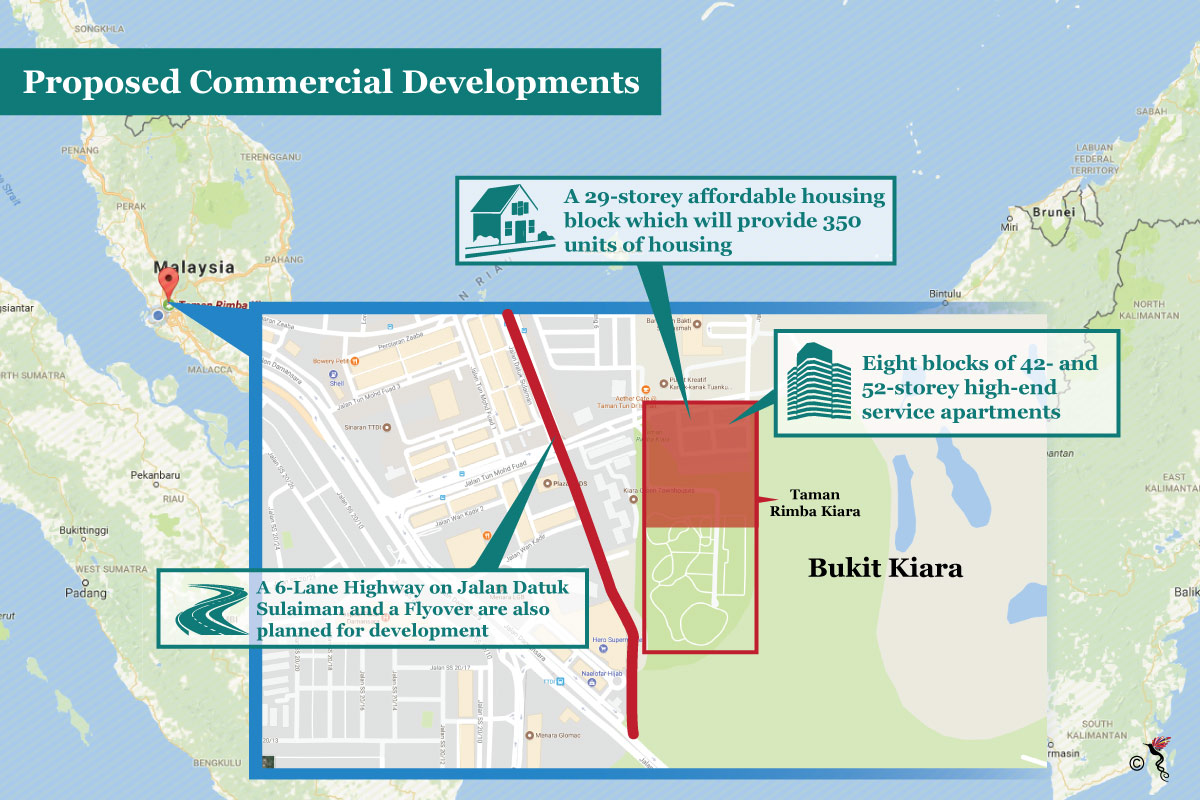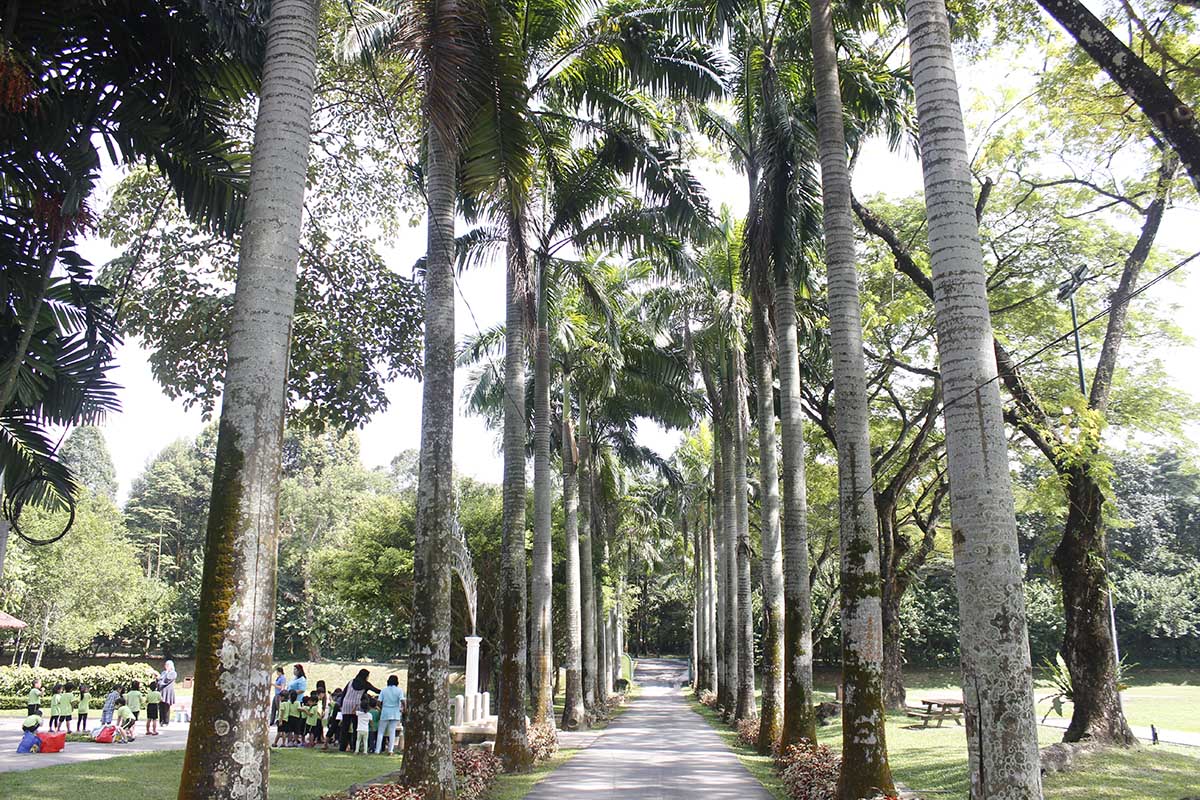Green Lungs in the ASEAN region
Green spaces or "green lungs" in cities play a vital role to its surrounding milieu. They do not only provide oxygen to the densely-populated concrete jungles, but also serves as a dedicated space for recreational activities.
Many cities in the Southeast Asian region have picturesque parks and hilly landscapes to counter-balance the urban sprawl. Trek through Bangkok’s most famous swathe of greenery, Bang Krachao and you’ll experience an oasis of calm compared to the high-paced lifestyles of those living or working in the city centre. It is home to a unique ecosystem, with more than a hundred species of plants and birds.
Another prime example would be Singapore. It is deemed as the “City in the Garden” and takes the crown for having the highest urban tree density – almost 30 percent of the island state's urban areas are being covered by greenery. Take a stroll through the connecting bridges of Southern Ridges and you are able to enjoy the view of city while breathing in air that isn't polluted by exhaust fumes.
Other countries around the region including Vietnam, Philippines and Myanmar take their green lungs very seriously as well. When it comes to green lung conservation in ASEAN, “the amount of land set aside for is relatively good and in general, the laws are good,” stated Kim Worm Sorensen, Team Leader for Biodiversity Conservation and Management of Protected Areas in ASEAN, in an e-mail correspondence with The ASEAN Post.
“However, it is management of and budgets for conservation that are inadequate (as everywhere else) and illegal activities can almost freely take place. For different reasons, I would say EU and ASEAN fare equally poorly,” he added.
As the Southeast Asian region continues to urbanise rapidly, it is no secret that its green spaces are diminishing simultaneously to make way for development. Like many bustling 21st-century metropolises, major cities in the region are placing more importance on urbanisation and commercial development.
The Battle of Taman Rimba Kiara
Situated in between Thailand and Singapore, one would naturally expect Malaysia to share a similar sense of appreciation towards green lungs as much as its neighbours do. However, there has been a looming issue revolving around one of Kuala Lumpur’s most important green lungs – the Taman Rimba Kiara. Situated just at the edge of the city, this park is part of the larger Bukit Kiara green lung, and is a designated public open space under the Kuala Lumpur City Draft Plan 2020. Throughout time, it has acted as a green haven to its visitors and continues to be one of the most-frequented green spaces in the city. It also serves as an eminent location for birds as there are more than 40 recorded species of birds within the park including hornbills, which is categorised under a Totally Protected species.
However, over the past year this park has been in the news for ill-fated reasons. In June 2016, the DBKL (Kuala Lumpur City Hall) issued a notice of a Proposed Development on a portion of land that would obliterate the larger area known as Taman Rimba Kiara. The YWP (Yayasan Wilayah Persekutuan) claims to have been issued title to this portion in 2014 and claims that it is now private property.
The Proposed Development involves:
(a) building of eight blocks of 42-54 storey high-end serviced apartments (High-End Apartments);
(b) building one 29-storey block comprising 350 units of affordable housing, for current residents of the longhouses (Longhouse Residents);
(c) an increase in population density from 74 persons per acre to 979 persons per acre.
The proposed development attempts to justify itself with the extensive construction and highway works.This ignores the reality that the proposed development is not sustainable. According to Save Taman Rimba Kiara Working Group's research, "TTDI will collapse under the 40 percent increased weight on its original infrastructure. In addition, the Construction & Highway Works will divide TTDI permanently into two and result in a permanent loss of TTDI's famous green canopy."

Proposed Developments by the DBKL which will take up almost half of Taman Rimba Kiara and cause colossal impacts to the environment and the surrounding community.
When the RM3 billion (approximately 710 million dollars) project was made public on June 14, 2016, the TTDI's (Taman Tun Dr Ismail) residents’ association submitted more than 5,000 signatures against it. The following month, the residents’ representatives attended a public hearing and found that in addition to the developments on 4.86ha of the land, a six-lane highway has been allotted to cut through the residential area of TTDI. In total, the proposed development would eat up 47.5 percent of the entire park.
“We’re looking at traffic problems, pollution, waste control issues and many more negative effects of the surrounding areas which will affect most importantly the people,” stated Tan Sri Mohd Salleh Nor, Director-General of Forest Research Institute Malaysia (FRIM) and chairman of NGO Friends of Bukit Kiara (FOBK) when contacted over phone by The ASEAN Post.
The TTDI Residents’ Association has also garnered their volunteer architects to come up with an alternative blueprint for affordable housing for the longhouse residents. This alternate plan would only cost about RM15 million as to the opposed RM3 billion project, after speaking to the residents of the longhouse themselves and understanding their needs.
Following the move by DBKL, the residents of TTDI have filed a judicial review against the city hall and Kuala Lumpur mayor Mohd Amin Nordin Abdul Aziz. The judicial review requests an order from the court to quash the condition planning permission and development order granted by DBKL to property developer Memang Perkasa, which Malton Berhad holds a 51 percent stake in.
As of today, The Kuala Lumpur High Court has postponed the case management for the stay application filed by residents of TTDI to October 23 2017.Save Taman Rimba Kiara Working Group committee coordinator Leon Koay stated over the phone to The ASEAN Post, "We hope that the court will decide then on an early date to hear our application for a stay order on the development." He added, “This case highlights the serious gap between government pronouncements on green lung conservation and protection, and the scary reality of what is happening on the ground.”
When The ASEAN Post took to the field to visit the park one morning, it was indeed a beautiful sight to take in with kindergarten children rehearsing a song on the green space for their big day, alongside old and young people out on their morning walks for a breather in the city. “This park is truly a safe-haven for us and our children, whom we bring out here almost every day. It will be very inconvenient for everyone if the proposed developments were to take place. We’d lose such a precious place,” said Althea, a kindergarten teacher from Twinkle Kidz who brings her students to the park for outdoor activities.
What was even more unfortunate however was when we approached some of the DBKL contractors who take care of the park’s cleanliness. “We were not told anything about a proposed development,” exclaimed Devi, 57, who has been cleaning the park for more than a decade now. If the proposed developments were to get a green light, the impacts of the project would not only be limited to the environment but would also stretch out to the livelihood of many.
“I hope the development will not happen. As it is, the Klang Valley is losing its green lungs, if we lose this now, there will surely be a wildfire effect with other green lungs in the country,” said Mohd Salleh Nor.
At the root of this, one question still remains – is it really possible for ASEAN regions to continue developing while being environmentally conscious?
“Yes, and it's much easier than most people think. However, we are up against very strong forces - the power of the dollar, greed, ignorance and a lack of empathy,” stated Sorensen.
